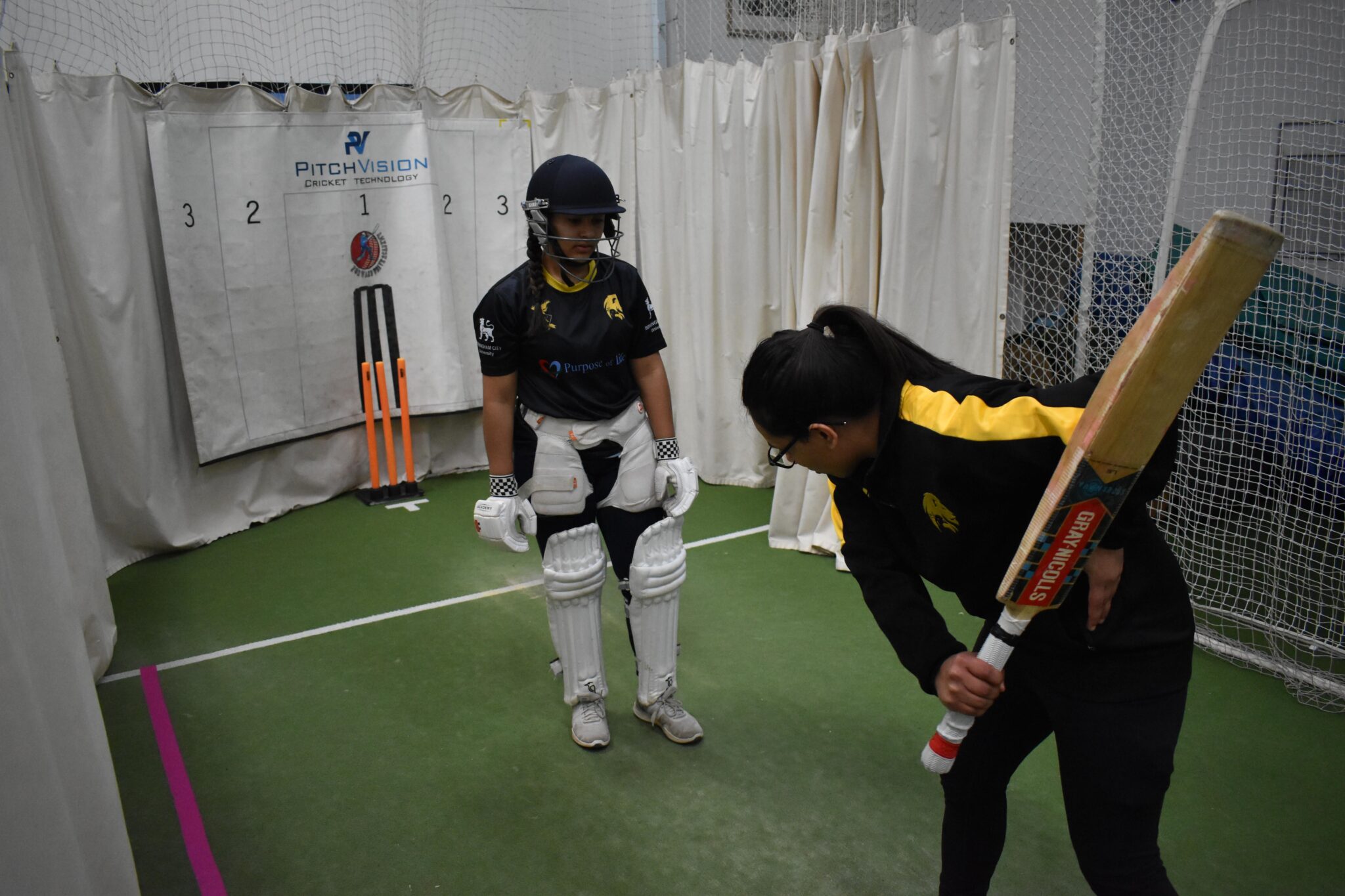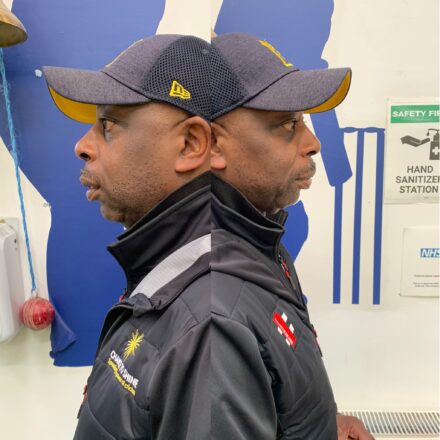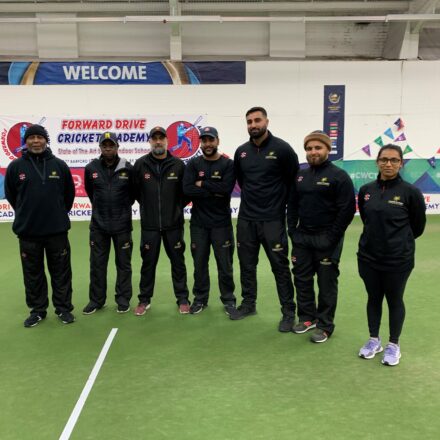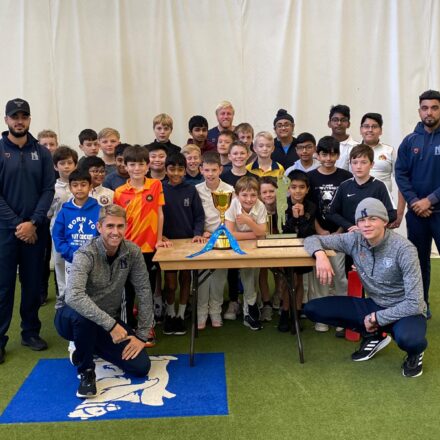It’s early evening in February and there is some ferocious fielding happening in the nets at the Forward Drive Cricket centre in Birmingham. At one end, three coaches are under fire as players launch a volley of cricket balls towards them from the opposite side of the cricket centre – straight and accurate, the sort of throw that means business and would have less experienced recipients backing away. Two of the coaches under fire are WCB Women & Girls’ Officer Gabby Basketter and WCB Community Participation Officer Mina Zahoor, both of whom are experienced coaches in the women’s game.
The players bombarding Gabby and Mina are actually a group of 13-15 year old girls. All eight participants are female cricketers on the Warwickshire CCC county age group programme. They are also attending this series of sessions organised by SACA (South Asian Cricket Academy) as part of a partnership with Warwickshire CCC to develop an understanding of how best to approach the development and retention of female British South Asian players.
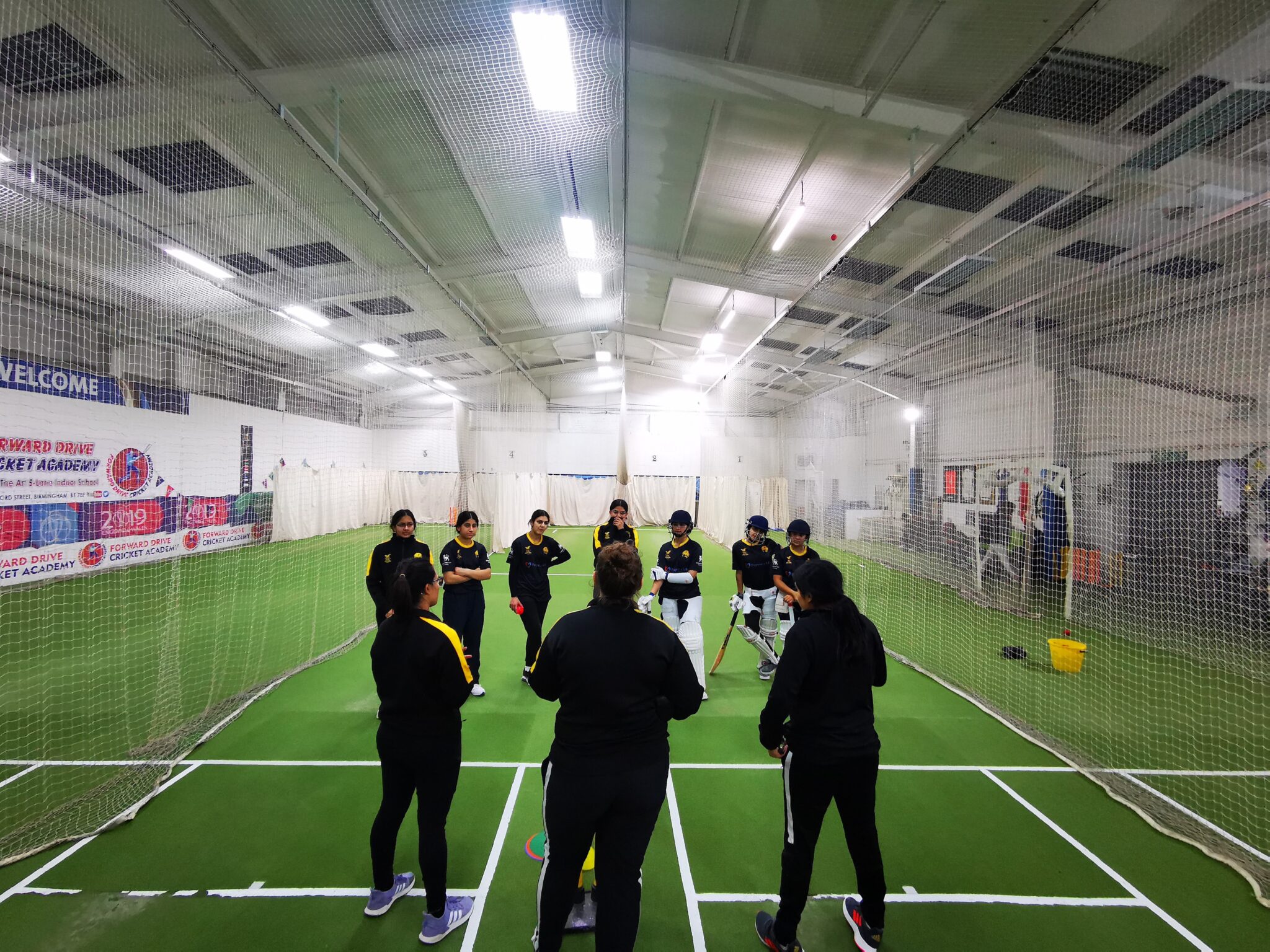
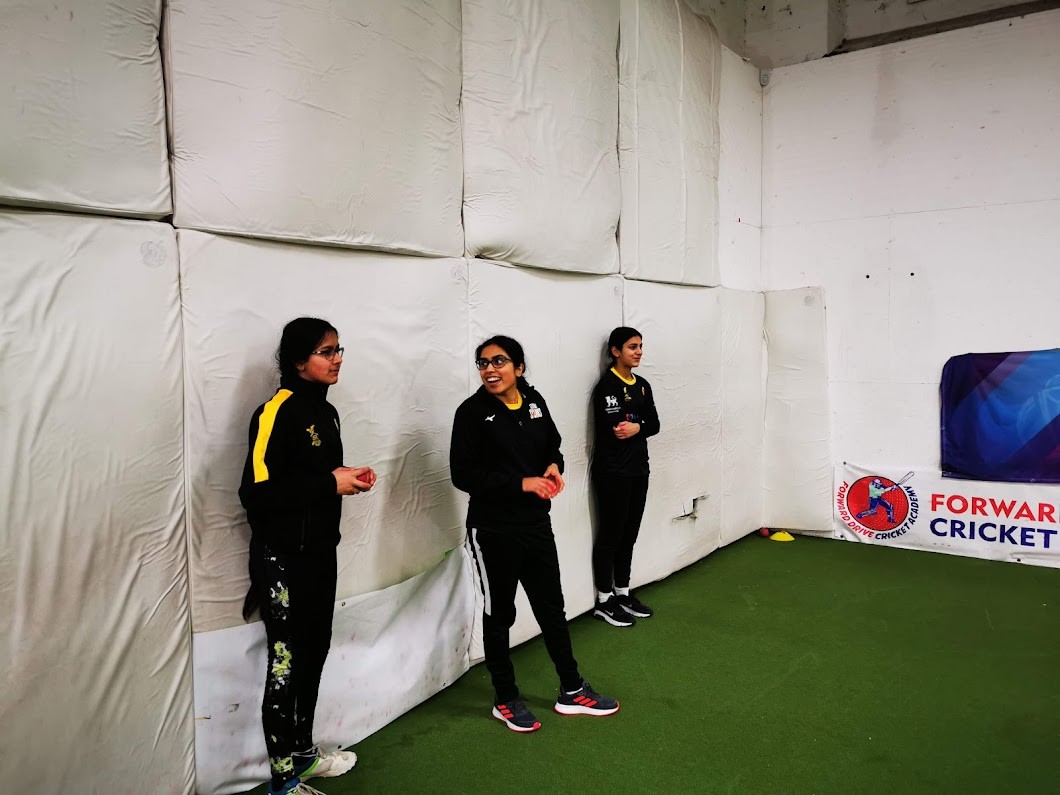
The hope is that this series of sessions will prove to be mutually beneficial for both the girls and the coaches. The girls will benefit from individually tailored coaching in small groups with a high ratio of coaches (three coaches for eight cricketers), while the coaches and the programme will benefit from increasing their understanding of how to coach, develop and retain young British South Asian female cricketers. This research will complement the work that SACA is also undertaking with adult male cricketers.
SACA objectives
The lead coach at tonight’s session is Tom Brown, founder of SACA, who is both an academic and cricket coach, partnering with Birmingham City University (BCU). Tom explains that SACA is an intervention programme designed to tackle the inequalities highlighted by his research regarding the lack of British South Asian (BSA) representation in professional cricket. SACA’s work with male cricketers is a short to medium term strategy to support BSA players and coaches whose career cycles don’t allow them to wait for systemic changes in the game. “In the women’s game,” continues Tom, “we recognise that the drop off in BSA girls’ participation happens earlier than with the men, at 15 rather than 18. We want to understand more about that drop off and how coaches can learn and adapt to retain more female BSA players.”
This is only the fourth session in the programme, but Tom Brown is very clear on its objectives. “We are here to build a learning environment with coaches so we can feed that learning back into the county system. At the same time, we are providing a fast track change for these eight girls at a pivotal time in their cricketing careers. The girls here tonight don’t have time to wait for the system to change. For many of them, they might be lost to the game if we don’t intervene now.”
Tom has built a strong coalition of expertise around the SACA Girls Academy. In addition to BCU, this research project also involves the Isa Guha Foundation, which supports work around the value of mentorship and what form that should take in order to be of most benefit to young female cricketers. Central Sparks player Anisha Patel is a regular coach at sessions and provides a great role model for the girls from the professional game. As far as the WCB is concerned, as well as its involvement in coaching, the WCB Community Participation team headed by Eaton Gordon are providing input, with Mina Zahoor also mentoring female BSA cricketers on Warwickshire’s Junior EPP Programme. Of her involvement in the Wednesday sessions with the county age group girls, Mina says, “I’ve seen their confidence grow week on week already. I hope I’ve helped them in some way, whether that’s giving them technical help, or providing some confidence on or off the pitch.”
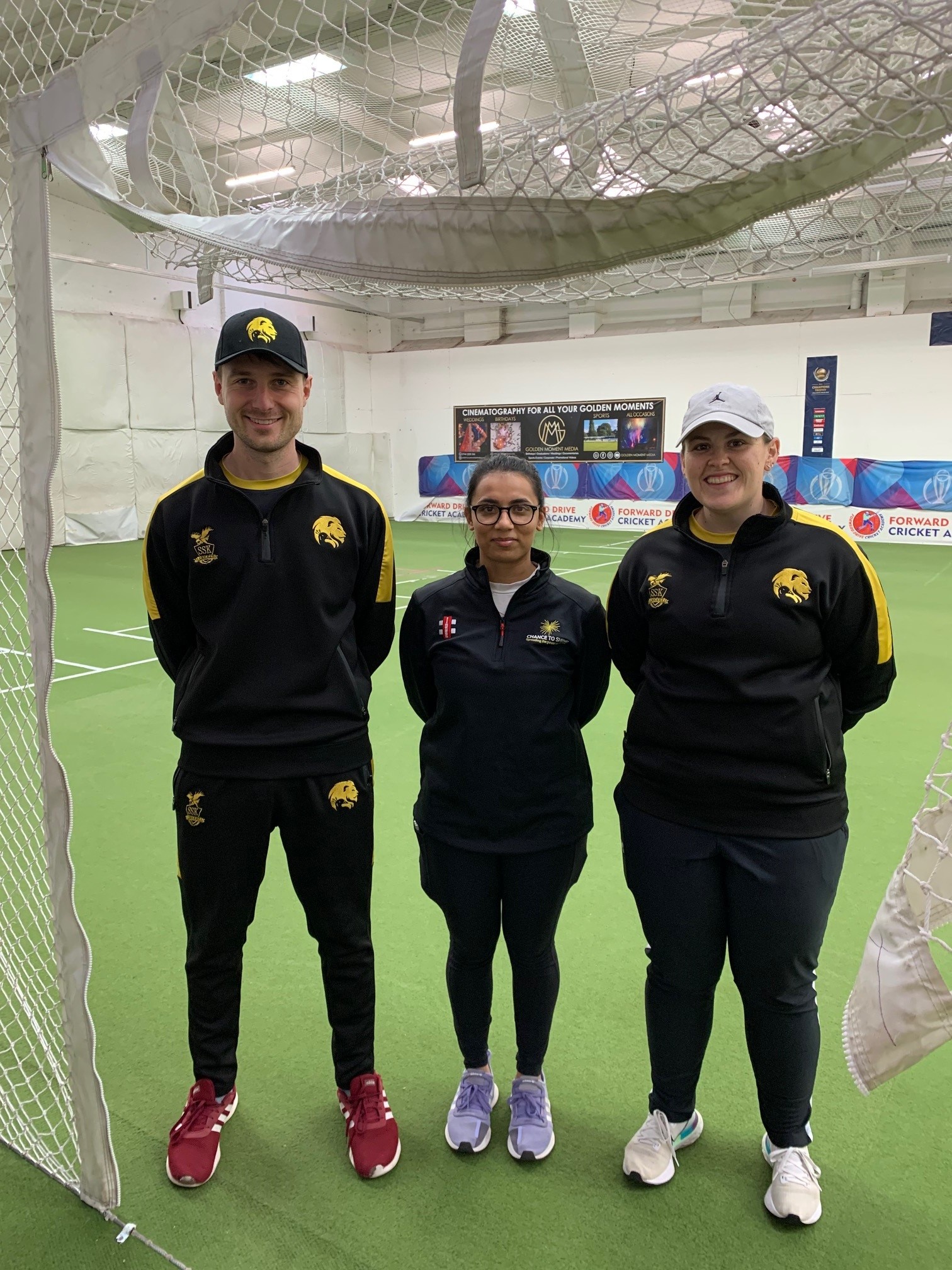
Feedback from participants
Talking to the girls themselves before their session, the first impression is that this is a participant led programme where the girls are encouraged to talk and are listened to. They are certainly willing to discuss their experience so far and are more forthcoming than many teenagers. All the girls talk about how much they are enjoying the programme and their positive feedback includes the following points;
- Appreciation that there are lots of coaches and a small group of players, enabling lots of 1:1 opportunities
- General consensus the girls are already seeing improvements in their fielding techniques and fitness, for example getting low to the ball when fielding
- Progress in batting has also been made, due to spending more time with the coaches
- Although they have only started the sessions since Christmas, the girls already feel more confident about the cricket season ahead
- There is a significant social impact to the programme and the girls speak about the advantages of getting to know each other better during the sessions. This has resulted in them communicating more with each other, helping each other and sharing tips.
Feedback from parents
These messages are also evident when speaking to the girls’ parents. Mr Mir, father of one participant, is impressed with the programme so far. “The time spent with the coaches is excellent, working on technique, temperament and game plan. The coaches ask the girls what they want to work on. My daughter told the coaches she wanted to work on her shot selection. She has taken control of the things she wants to work on and feels empowered as a result. These sessions are very fruitful and show that these girls have a mindset which is as competitive and dedicated as the boys. I can compare as I also have a boy in the U12 boys’ county age group, and I see the same qualities. On a Wednesday evening, my daughter can’t wait to come here, which is a change as usually she would want to stay at home and get on with her homework. Tom’s approach is very good. He is professional and engaging, and his academic background means the girls feel confident giving feedback.”
Other parents agree with this summary. Mr Afzaal says his daughter has grown in confidence and in terms of the improvements to her game as a result of the SACA sessions. “She really enjoys coming here. She is confident and excited about playing cricket as a result of these sessions.”
Looking forward
This confidence shines through as the girls finish their fielding session. The enthusiasm and vigour with which they throw the ball is reflective of the philosophy around the whole SACA programme – proactive, targeted and getting straight to the heart of matters. As Gabby Basketter summarises, “This programme is great for me as a coach. It is enabling me to coach really talented players and at the same time also gain a better understanding of female cricketers from South Asian backgrounds. I am enjoying developing a rapport with the girls and helping meet their individual needs, whilst also expanding my coaching knowledge and delivery framework. The feedback and information we receive will be invaluable to the research project but also, on a personal level, I can’t wait to see how the girls get on with their cricket this summer when the county season starts.”
